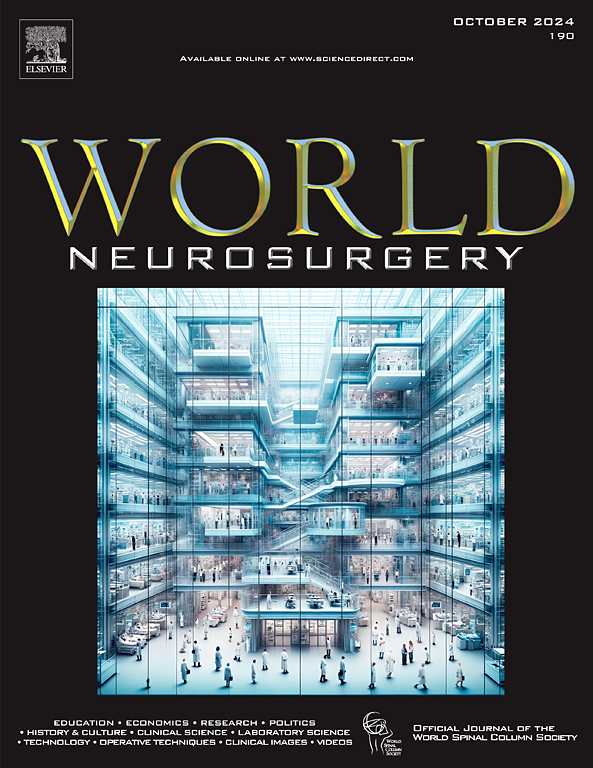机器人辅助神经外科手术中的遥控神经定位。
IF 1.9
4区 医学
Q3 CLINICAL NEUROLOGY
引用次数: 0
摘要
本文研究了利用远程操作(主从操作)实现神经配准,以促进远程手术,提高机器人辅助神经外科手术的整体精度和覆盖范围。准确的神经定位很重要,因为手术的成功高度依赖于它。采用六自由度并联运动机构(6D-PKM)主从机器人的远程操作模式,将其应用于神经配准和神经外科手术。利用轨迹修正算法求解6D-PKM的正运动学,实现了6D-PKM的实时运动控制,平移精度为1 μm,姿态精度为0.001°。主操作人员使用6D-PKM主机构在远程操作模式下移动6D-PKM从机器人,该机器人配备了一个直径为4毫米的触控探针。在神经注册中,奴隶被远程引导以预先确定的顺序触摸基准标记。在医学图像空间和真实患者空间之间建立相关性,建立神经配准。通过颅骨幻影实验验证了神经配准的准确性。这些幻影是用来模拟神经外科手术过程的。神经配准过程成功地配准了幻影,最大配准误差为0.6 mm。神经外科手术的准确性通过几个目标点在幻影验证。机器人将直径为2mm的手术针穿过预定直径为3mm、径向间隙为500 μm的圆柱形靶孔,验证了配准的准确性。该方法消除了视线问题和额外的神经登记单元的要求。这减少了登记时间,使术中登记可行。精确的神经登记使用远程操作已被证明。以机器人为基础的神经外科手术的总体准确性被制成表格。本文章由计算机程序翻译,如有差异,请以英文原文为准。
Tele-manipulative Neuro-registration in Robot-assisted Neurosurgery
Background
Accurate neuro-registration is important as the success of the surgical procedure highly depends on it. This article deals with neuro-registration using tele-manipulation (Master-Slave Manipulation) to facilitate tele-surgery and enhance the overall accuracy and reach of the robot-assisted neurosurgery.
Methods
A 6 degrees-of-freedom parallel kinematic mechanism (6D-PKM) master-slave robot in tele-manipulation mode is utilized for both neuro-registration and neurosurgery. Real-time kinematic control of 6D-PKM is made possible by solving its forward kinematics using the trajectory modifier algorithm with an accuracy of 1 μm and 0.001° in translation and orientation, respectively, in real time. The master operator using the 6D-PKM master mechanism moves the 6D-PKM slave robot equipped with a touch probe stylus (4 mm diameter) in tele-manipulation mode. In neuro-registration, the slave is remotely guided to touch the fiducial marker in a predetermined order. A correlation between the medical image space and the real patient space is made to establish the neuro-registration. The accuracy of neuro-registration is validated through experiments on skull phantoms. These phantoms are designed to simulate the neurosurgical process.
Results
The neuro-registration process successfully registers the phantoms, and maximum registration error is found to be 0.6 mm. The accuracy of neurosurgery is validated using several target points in phantom. The accuracy of registration is also verified by robot piercing a 2-mm-diameter surgical needle through a predesignated 3-mm-diameter cylindrical target hole with radial clearance of 500 μm.
Conclusion
Accurate neuro-registration using tele-manipulation has been demonstrated. The overall accuracy of the robot-based neurosurgery is tabulated. This approach eliminates line-of-sight issue and the requirement of an additional unit for neuro-registration. This minimizes the registration time and makes intraoperative registration feasible.
求助全文
通过发布文献求助,成功后即可免费获取论文全文。
去求助
来源期刊

World neurosurgery
CLINICAL NEUROLOGY-SURGERY
CiteScore
3.90
自引率
15.00%
发文量
1765
审稿时长
47 days
期刊介绍:
World Neurosurgery has an open access mirror journal World Neurosurgery: X, sharing the same aims and scope, editorial team, submission system and rigorous peer review.
The journal''s mission is to:
-To provide a first-class international forum and a 2-way conduit for dialogue that is relevant to neurosurgeons and providers who care for neurosurgery patients. The categories of the exchanged information include clinical and basic science, as well as global information that provide social, political, educational, economic, cultural or societal insights and knowledge that are of significance and relevance to worldwide neurosurgery patient care.
-To act as a primary intellectual catalyst for the stimulation of creativity, the creation of new knowledge, and the enhancement of quality neurosurgical care worldwide.
-To provide a forum for communication that enriches the lives of all neurosurgeons and their colleagues; and, in so doing, enriches the lives of their patients.
Topics to be addressed in World Neurosurgery include: EDUCATION, ECONOMICS, RESEARCH, POLITICS, HISTORY, CULTURE, CLINICAL SCIENCE, LABORATORY SCIENCE, TECHNOLOGY, OPERATIVE TECHNIQUES, CLINICAL IMAGES, VIDEOS
 求助内容:
求助内容: 应助结果提醒方式:
应助结果提醒方式:


